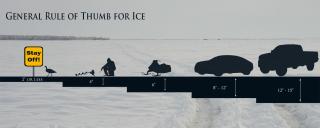
Ice Safety
Before going onto a frozen lake, pond or river, it's important to take safety precautions to reduce the risk of falling through the ice.
Knowing how to judge ice conditions will also help you make more informed decisions while enjoying your outing. Look for clear blue ice. New ice is stronger than old ice. Remember you take a risk anytime you go onto the ice. Ice thickness is not consistent. Beware of ice around partially submerged objects such as trees, brush, embankments or structures. Ice will not form as quickly where water is shallow or where objects may absorb sunlight. When ice fishing, it is always a good idea to drill test holes or use an ice chisel as you venture onto a lake to help judge the thickness and character of the ice.
The general rule of thumb for ice: 2 inches - STAY OFF
- 4 inches of good ice for a walking individual
- 6 inches of good ice for a snowmobile or ATV
- 8-12 inches of good ice for a car or small pickup
- 12-15 inches of good ice for a medium pickup truck.

Snow Covered Ice
Beware of ice covered with snow. Snow acts much like a blanket, insulating thin ice and preventing the formation of clear, blue ice.
Snow can also hide cracked, weak and open water.
Daily changes in temperature cause ice to expand and contract, creating cracks and possibly pressure ridges which can affect ice strength.
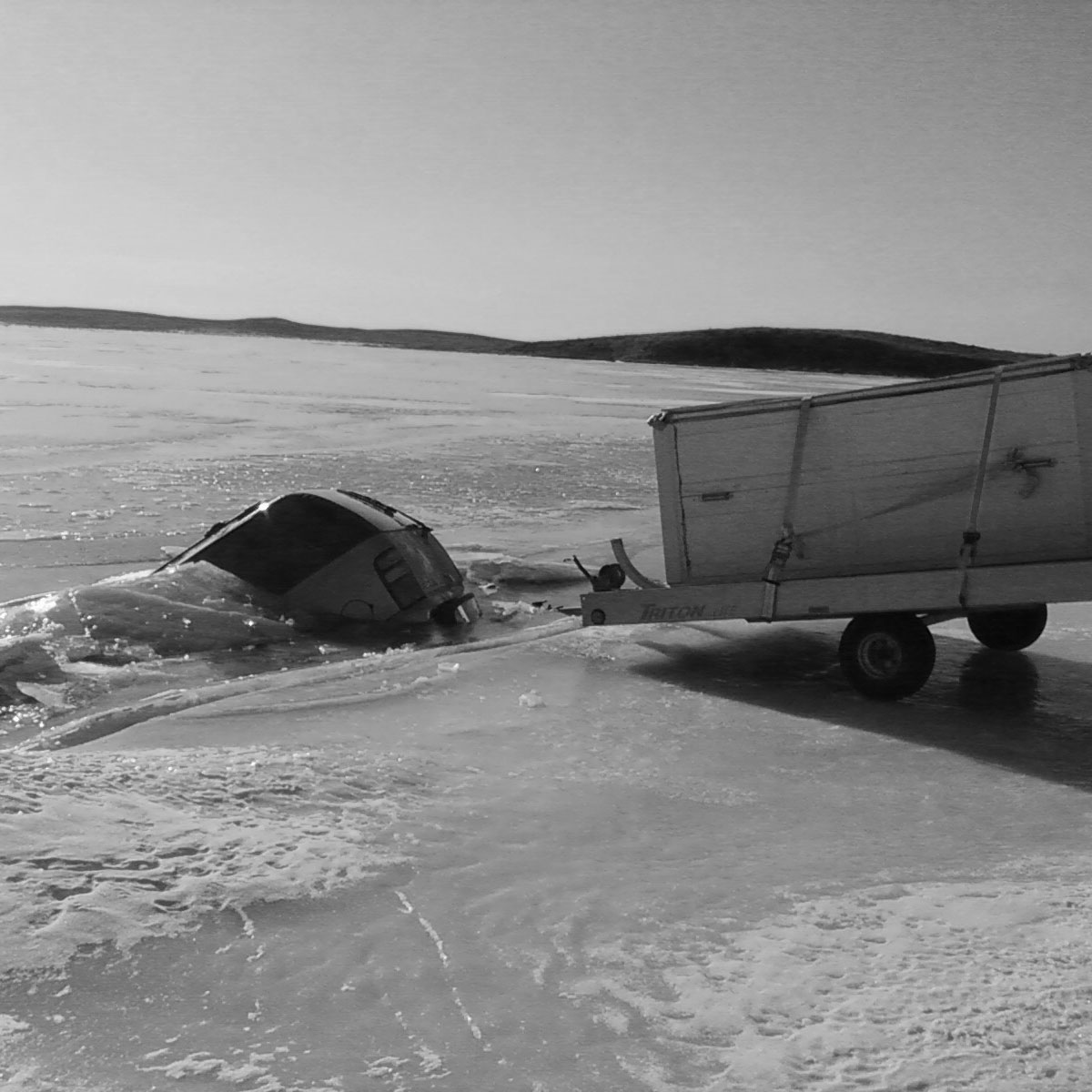
Vehicles
Traveling in a vehicle early or late in the season is an "accident waiting to happen".
Do not drive across ice at night or when it is snowing.
You can easily become disoriented and end up in areas of the lake you never intended to be.
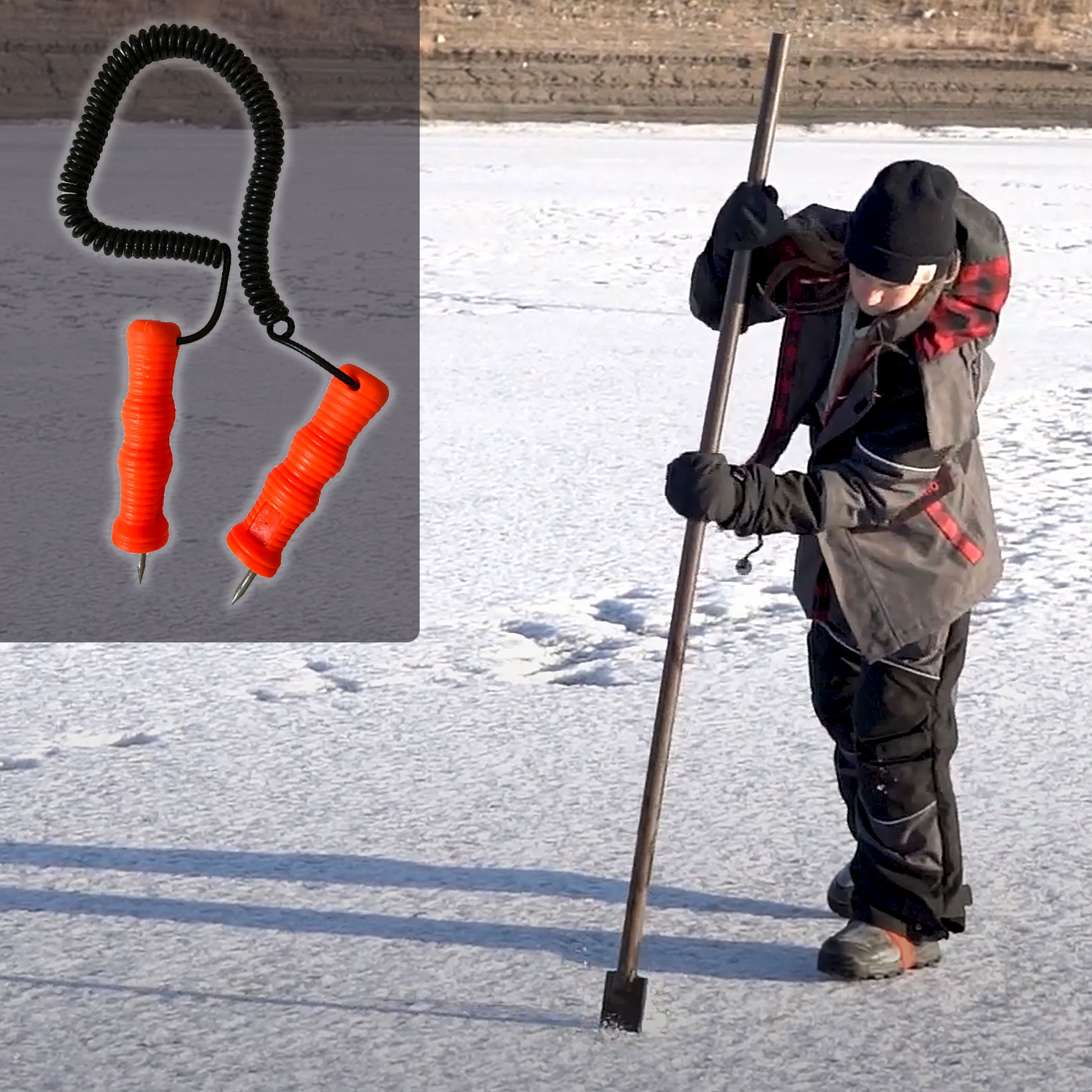
Ice Safety Kit
Carry a safety kit that includes:
- Ice chisel that you can use to check the thickness of the ice as you move out onto the ice.
- Ice picks or set of screwdrivers that you can use to pull yourself back on the ice.
- A cell phone to call for assistance.
What To Do If You Fall In
- Try not to panic.
- Turn toward the direction you came. The safest place to pull yourself back up on the ice is the last place you stepped before you went through the ice.
- Place your hands and arms on the unbroken surface of the ice.
- Work your way up by kicking your feet.
- Use your ice picks to assist in pulling yourself onto the ice.
- Once you are lying on the ice, roll away from the weak or broken ice, don't attempt to stand up.

Place hands and arms on unbroken surface of the ice. Work your way up by kicking your feet and using picks or wet gloves on frozen surface.
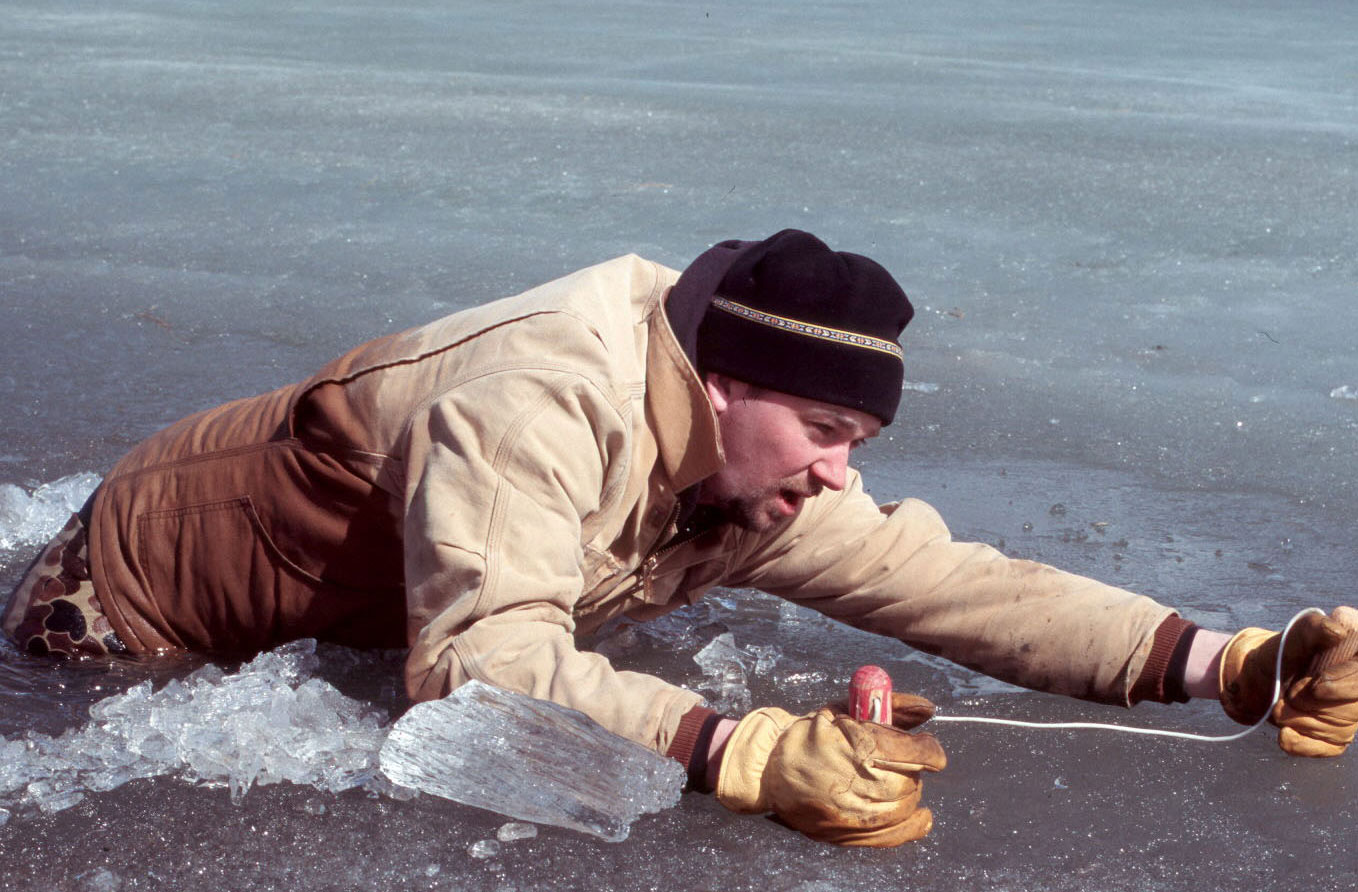
Once on the ice, roll away from the weak or broken ice, do not attempt to stand up.
What To Do If a Companion Falls In
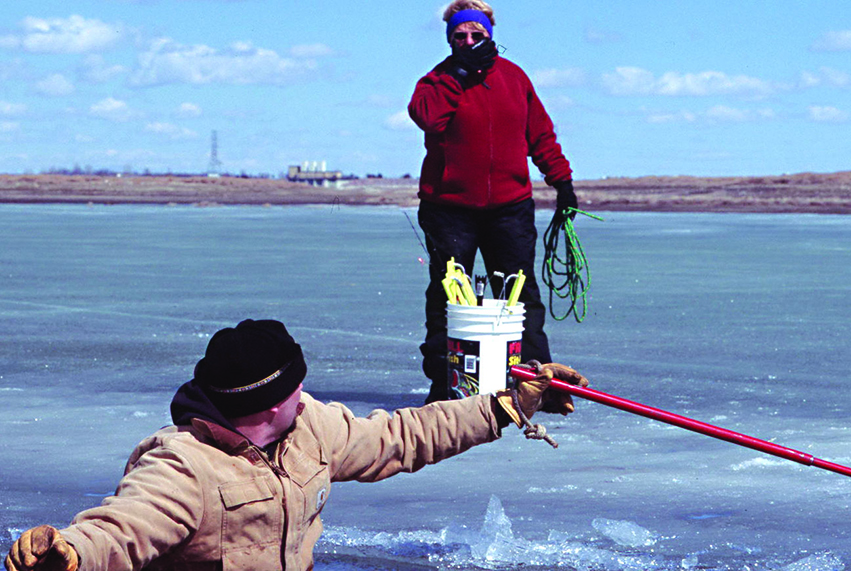
Stay Calm
Keep calm, have a plan. Do not run out to assist the victim. You can go from rescuer to victim in a short second.
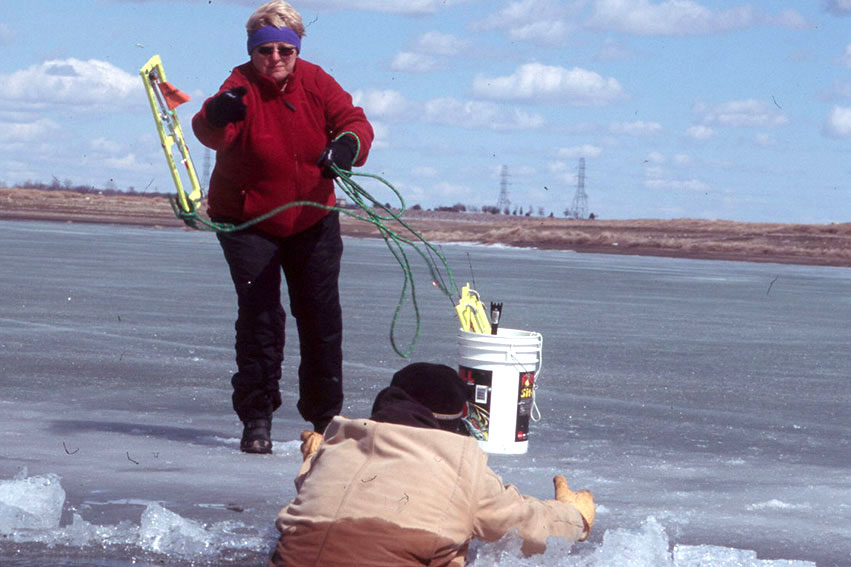
Reach
Reach the victim with a long pole, board, rope, blanket or cables.
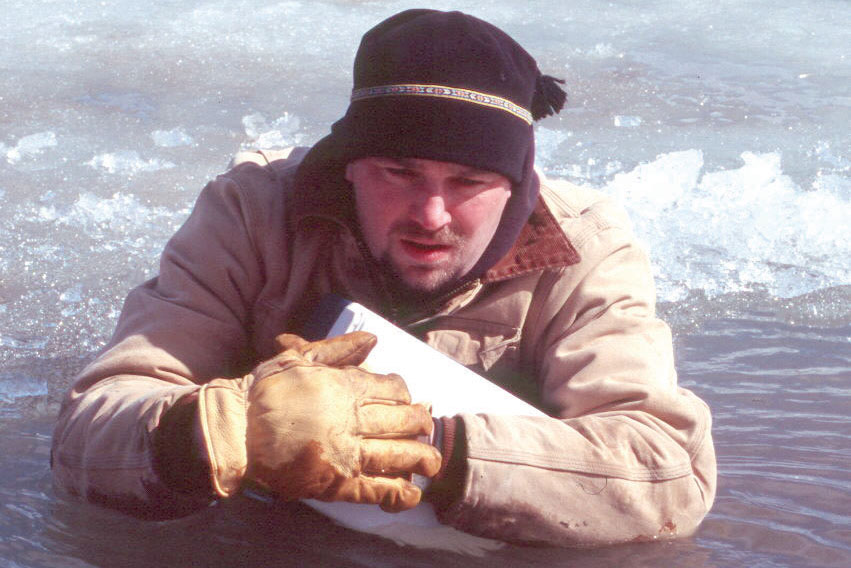
Throw
Throw the victim a life jacket, empty water jug, or other buoyant object.
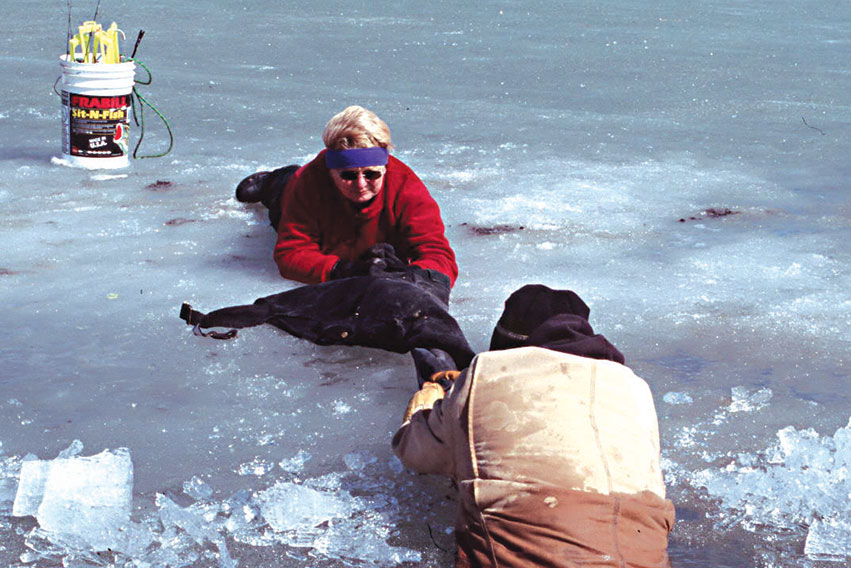
Human Chain
Build a human chain in which rescuers lie on the ice with each person grasping the feet of the person in front.
Treat hypothermia victim by removing wet clothing and replacing it with dry clothing.
Get medical assistance—people who have been in cold water may seem fine at first but may suffer potential life threatening effects when the cold blood starts to circulate through the body from the extremities.
